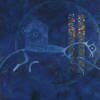Unveiling the Secrets of Legendary Creatures: Archaeology's Role
Legendary creatures have long captured the human imagination. From the majestic dragon to the elusive griffin, these mythical beings have stirred our curiosity and fueled countless stories and legends. But how much of these legends are based on reality? Can archaeology, with its spades and trowels, actually help us uncover the truth behind these age-old tales? If you're an educator exploring fascinating topics like this with your students, you might consider enlisting the help of dissertation ghostwriters from https://essaysprofessors.com/ghost-writer-for-dissertation.html to guide you through the research and writing process. This article aims to shed light on how archaeology can bridge the gap between myth and reality, revealing the historical roots of legendary beings. We'll delve into the methodologies used by archaeologists and explore real-life examples of archaeological discoveries that have debunked or validated myths.
The Role of Archaeology in Unraveling Mysteries
Archaeology, often associated with unearthing ancient cities and deciphering long-lost scripts, has a surprising role to play in the world of legendary creatures. This article aims to shed light on how archaeology can bridge the gap between myth and reality, revealing the historical roots of legendary beings. We'll delve into the methodologies used by archaeologists and explore real-life examples of archaeological discoveries that have debunked or validated myths.
Our journey will take us from the myths that have shaped cultures around the world to the archaeological excavations that bring us closer to understanding the truth. We'll also consider the implications of these findings for educators, offering valuable insights for engaging students in the exciting intersection of history, science, and legend.
The Mythical Menagerie
Before we embark on our archaeological adventure, let's acquaint ourselves with the stars of our story – the legendary creatures. These beings are often characterized by a unique blend of features that set them apart from the animal kingdom. Dragons, griffins, and krakens are just a few examples of these remarkable entities, each with its own set of characteristics and stories.
As we explore these legendary creatures, you'll notice recurring themes and shared characteristics. Many are associated with the natural elements, such as fire or water, while others embody both human and animal traits. These commonalities form the basis for myths that have endured through centuries.
To better understand the relationship between myth and reality, we'll delve into well-known legendary creatures from different cultures. The dragon, a symbol of power and wisdom in Chinese folklore, offers a fascinating case study. The griffin, with its regal combination of an eagle and a lion, has left its mark in various ancient civilizations. And then there's the enigmatic kraken, lurking in the depths of the sea, whose existence has intrigued sailors and storytellers for generations.
Archaeology: Unearthing the Past
Now, let's open the door to the realm of archaeology. Archaeology is the scientific study of human history and prehistory through the excavation and analysis of physical remains. Archaeologists use a range of methods and techniques, from carefully digging up artifacts to advanced technologies like ground-penetrating radar. Their goal is to piece together the puzzle of the past.
Archaeologists are like detectives of the past, unearthing clues from the soil. They uncover the secrets of ancient civilizations, exploring everything from their daily lives to their myths and legends. Through meticulous excavation and analysis, they bring us closer to the people and creatures who once roamed the Earth.
Archaeology doesn't work in isolation. It collaborates with other scientific disciplines, such as anthropology, geology, and biology. By examining ancient bones, examining geological layers, and conducting DNA analysis, archaeologists can piece together a more complete picture of history. This multidisciplinary approach is vital in understanding the mysteries that have intrigued us for centuries.
Bridge between Myth and Reality
With our understanding of archaeology in place, it's time to build the bridge between myth and reality. We'll explore the origins of mythical creatures, considering how these stories developed in various cultures. Some legends were born out of fear and imagination, while others were inspired by real-life encounters with fossils or unusual creatures.
But it's not all imagination. Archaeology has, on occasion, revealed evidence that links legendary creatures to reality. These discoveries range from fossilized remains that inspired myths to depictions of creatures in ancient art and literature. As we journey through time, we'll uncover the tantalizing breadcrumbs that archaeologists have found.
The importance of these archaeological findings goes beyond satisfying our curiosity. They can either validate the existence of legendary creatures or debunk myths, offering a deeper understanding of the cultures that created them. By considering these discoveries, we can appreciate the intricate relationship between history and legend.
Case Studies
Example 1: Dragons - Discoveries in China
Let's start our case studies with one of the most iconic legendary creatures: the dragon. In Chinese culture, dragons are symbols of power, wisdom, and good fortune. But can these mighty creatures have any basis in reality? Archaeological discoveries in China have provided intriguing insights into the dragon's origin, adding a new layer of wonder to this timeless legend.
Example 2: Griffin - Unearthing the Bactrian Gold
The griffin, with its body of a lion and the wings of an eagle, is another legendary creature that has captured human imagination. A remarkable archaeological find known as the Bactrian Gold offers a tantalizing connection between griffins and the ancient cultures of Central Asia. This discovery demonstrates the power of archaeology in unraveling the mysteries of myth.
Example 3: Kraken - Underwater Archaeology and Sea Serpents
Our final case study delves into the enigma of the kraken and sea serpents. These legendary sea creatures have terrorized sailors for centuries. While their existence remains elusive, underwater archaeology has provided insights into the mysterious creatures lurking beneath the waves. By exploring shipwrecks and submerged ruins, archaeologists have contributed to our understanding of these aquatic myths.
The Enigma of Extinct Animals
To further illuminate the connection between myths and reality, we'll examine how knowledge of extinct species influenced the creation of legendary creatures. Many legendary beings, such as the mammoth-sized cyclops, could have been inspired by the discovery of prehistoric animal remains. The line between myth and natural history blurs as we uncover these connections.
Archaeology has unveiled a trove of evidence linking legendary creatures to real prehistoric animals. Fossil discoveries, cave art, and ancient writings provide clues about the creatures that once roamed the Earth. By examining these artifacts and remains, archaeologists have shed light on the origins of the myths that have captivated us for centuries.
Challenges and Controversies
While archaeology can uncover fascinating connections between myths and reality, it has its limitations. Some legends are so ancient and ethereal that concrete evidence remains elusive. The mysteries of cryptids like Bigfoot and the Loch Ness Monster challenge the boundaries of archaeological inquiry. As we confront these limitations, we also acknowledge the allure of the unknown.
The intersection of archaeology and legends often sparks spirited debates within the scientific community. Skeptics question the validity of certain claims, emphasizing the importance of empirical evidence. These debates are a healthy part of scientific inquiry and remind us to approach archaeological discoveries with a critical eye.
Ethical considerations also play a crucial role in archaeology. Excavation and conservation must be carried out with care and respect for cultural heritage and the environment. Archaeologists work tirelessly to preserve the past while respecting the beliefs and traditions of the communities they engage with.
Educational Implications
As educators, we must recognize the value of these archaeological discoveries in the classroom. They provide a unique opportunity to engage students in interdisciplinary learning. By weaving history, science, and mythology together, educators can spark curiosity and critical thinking in their students.
These discoveries also encourage students to approach information with skepticism, a crucial skill in today's information-rich world. Educators can use legendary creatures as a springboard for discussions on evaluating evidence, distinguishing fact from fiction, and developing a healthy sense of wonder.
By revealing the real stories behind myths, educators can inspire a profound appreciation for the complex interplay between human imagination and the natural world. These stories remind us that the mysteries of the past are still waiting to be uncovered, and students may one day embark on their own archaeological adventures.
Future Prospects
The future of archaeology is bright, with advancements in technology continually expanding our capacity to explore the past. Ground-penetrating radar, DNA analysis, and underwater excavation tools are just a few examples of the innovations that hold promise for uncovering more connections between myths and reality.
As technology continues to evolve, we can look forward to even more discoveries that bridge the gap between myths and reality. Whether it's in the depths of the ocean or the heart of a forgotten city, the potential for unearthing new connections is boundless.
Archaeology's role in unraveling the mysteries of legendary creatures is evolving. As we embrace new methodologies and technologies, we can expect archaeology to play an increasingly significant role in myth-busting. The lines between fact and fiction will continue to blur as we venture deeper into the realm of history and legend.
Conclusion
In closing, our journey from legend to reality has taken us on a fascinating exploration of the world of legendary creatures and the role of archaeology in revealing their secrets. We've uncovered connections between myths and real animals, marveled at archaeological discoveries, and considered the educational implications of these findings. As we reflect on the collaborative nature of history and science, we're reminded of the timeless allure of both legends and reality. With open minds and a thirst for knowledge, we can continue to embrace the mysteries of our world and the wonders that lie just beneath the surface.





















